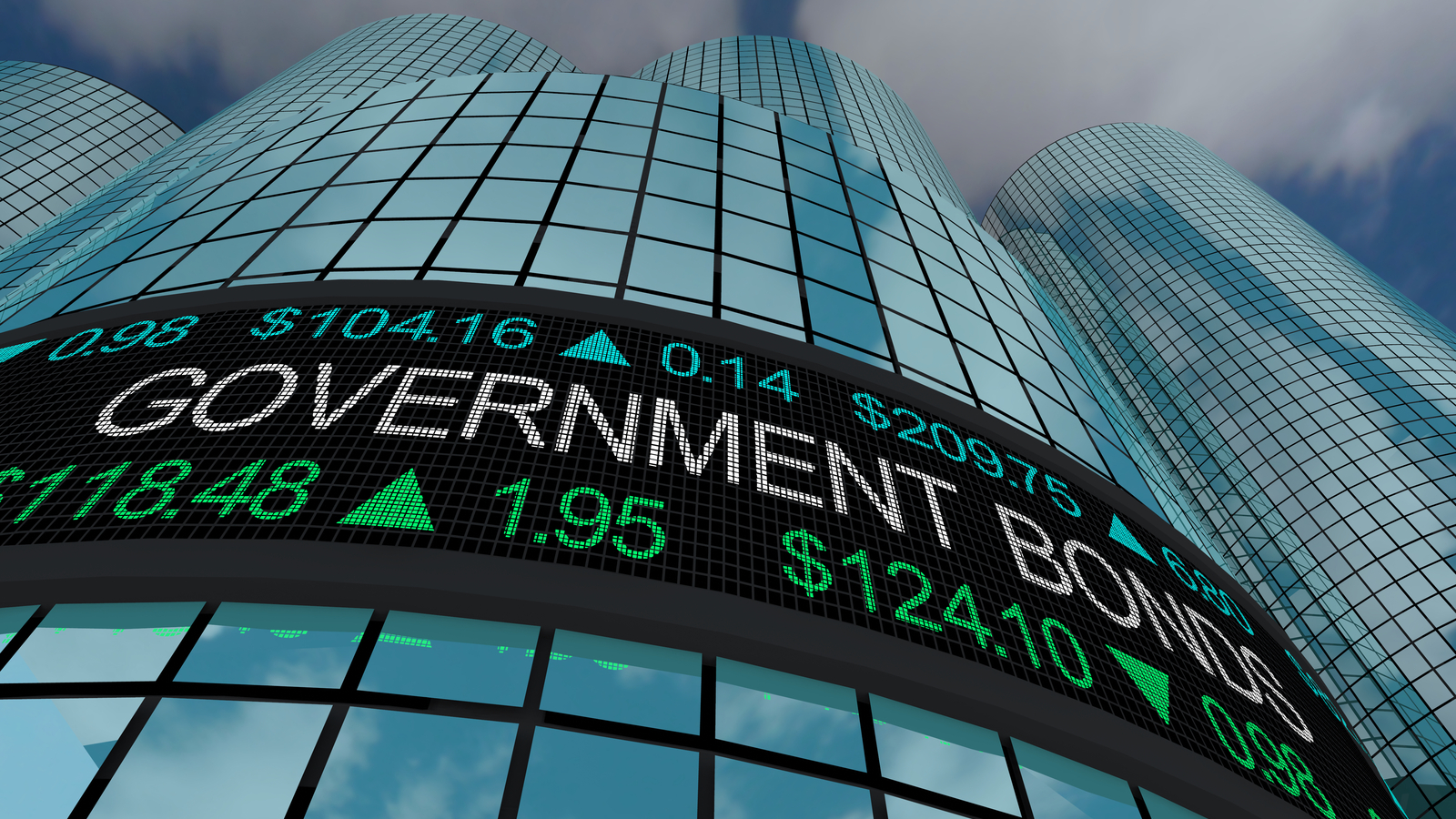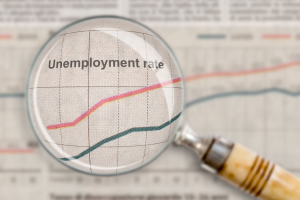
Government bond yields have been soaring … the Catch-22 if we are returning to a healthy economy … what will be the new normal for bond yields?… what it means for stocks
When the economy and corporate earnings are bad, what do many investors do?
Hide out in bonds.
Now, this summer, economists have changed their tune – “no more recession.” Behind this reversal has been a string of surprisingly strong economic data.
Despite the Fed’s best efforts, the labor market remains incredibly tight, and though different indicators reveal a mixed picture on the economy, there’s plenty of data pointing toward significant economic strength. An example of this from this week is the Atlanta Fed’s projection that Q3 GDP will come in at a blistering 5.8%.
So, if the prevailing sentiment is now “we’ve dodged the recession and a blue-sky economy is on the way,” then why do we need the safety of bonds?
Logic suggests there’s less need. After all, why would you want to be invested in stodgy ‘ole bonds when the economy – and presumably the stock market – is about to roar higher?
So, if investors dump bonds, prices go down and yields go up because bond prices and yields are inversely correlated. And right on cue, this week, the 10-year treasury yield hit a 15-year high.
(There are other reasons behind recent rising bond yields, but we’re limiting our scope for the moment.)
From The Wall Street Journal:
A key benchmark for interest rates across the economy, the 10-year yield settled at 4.258%, according to Tradeweb. That…marked its highest close since June 2008, months before the collapse of Lehman Brothers and expansive Federal Reserve policy ushered in more than a decade of historically low bond yields.
The 10-year yield continued climbing yesterday, hitting 4.32%. As I write Friday morning, it’s cooling and has fallen back to 4.24%.
As we’ve detailed here in the Digest, the average stock portfolio struggles when yields are surging. And true to form, look at what’s happened to the S&P here in August as the 10-year yield has jumped higher.
If you’re having trouble seeing it, while the 10-year yield (in green) has climbed 8%, the S&P (in black) has fallen more than 5%.

The Catch-22 of today’s “we’ve dodged a recession” outlook
There’s a bullish narrative I’ve heard from a handful of financial talking heads that generally goes: “Inflation is done, bond yields will settle lower, economic growth is strengthening, earnings and stocks will soar.”
The poster child for such a scenario is the 2010s. But upon closer inspection, to what degree does today’s economy, and more importantly, tomorrow’s economy, resemble that of the 2010s?
In the 2010s, we had weak global economic growth, inflation that barely registered a heartbeat, and central banks around the world flooding their bond markets with liquidity to stimulate growth.
Today, on the growth front, the bandwagon position is that there will be no recession and stronger growth is on the way. At the top of today’s Digest, we noted how the latest Q3 GDP projection is for 5.8% growth. That’s sizzling hot.
And yes, we could point toward plenty of indicators showing slowing growth but let’s maintain perspective – that slowing growth is the result of the Fed’s efforts to tamp down recent explosive growth.
Meanwhile, though inflation is falling, we’ve been struggling with the worst inflation in 40 years. Plus, despite how much inflation has come down, the Fed’s preferred inflation gauge remains 105% above the Fed’s target rate. This is pointing toward a “higher for longer” rate policy from the Fed to prevent an inflation resurgence.
As to central bank liquidity, the Fed has been engaged in Quantitative Tightening for more than one year now. Rather than buying bonds, it’s been letting them roll off its balance sheet, which dries up liquidity.
All of this is the opposite of the 2010s market environment.
If the low-yield environment of the 2010s isn’t likely to come back, what might a “new normal” for bonds look like?
Well, what do the numbers say?
The average 10-year treasury yield during the 2010s was 2.17%.
And how does this compare with the long-term average yield of the 10-year treasury?
Well, according to YCharts.com, the long-term average is 5.88%
So, let’s say the bulls are right and there’s no recession coming because the U.S. economy is too strong. Well, that strong economy won’t require any stimulus from the Fed in the form of artificially lower rates such as we had in the 2010s. Shouldn’t we then expect the 10-year treasury yield to gravitate toward its long-term “normal” average, rather than its 2010s “abnormal” average?
And with the 10-year treasury now at 4.24% while the long-term average is 5.88%, that suggests “normal” means higher rates – even from here.
Isn’t that a potential headwind for stocks?
Here’s The Wall Street Journal’s answer:
The rise in yields is making investors nervous, because past surges have at times proved destabilizing for markets.
With the 10-year yield still well below the level of short-term interest rates set by the Fed, some analysts see ample room for it to keep climbing—a development that could lead to unexpected disruptions, as investors are forced to unwind wagers based on projections for lower yields.
This dovetails us into the Fed…
As we noted in yesterday’s Digest, we’re entering a new period of uncertainty about what the Fed will do from here
How long will it hold rates at elevated levels? When it finally enacts its first rate cut, how quickly will additional cuts follow? If inflation ticks back up, will rates go even higher? Because of the lag-time in when we see housing costs show up in inflation reports, what will happen when the resurgence in home prices over the last several months eventually shows up in the data some months down the road?
We don’t know those answers, but we do know one thing…
The Fed is nowhere close to wanting to “stimulate” the economy, which would be inflationary.
So, while we are likely to see rates begin to come down next year, we’ll probably see the Fed ease into those cuts in fear of “too much, too fast,” that would risk cracking the door open to inflation.
Now, what I haven’t seen discussed much anywhere is “where will the Fed stop cutting rates?”
In our analysis today, we’ve been trying to ignore the “abnormal” period of the 2010s (when the Fed Funds rate was basically 0%). So, what is the long-term average fed funds rate?
Again, according to YCharts.com, it’s 4.60%.
Is the stock market ready for the fed funds rate to slowly meander down to an eventual stopping point somewhere near 4.6%? Or is Wall Street blindly assuming the Fed will drop rates all the way to roughly 2%?
If that’s the assumption, why?
If bulls are right and inflation is done and the economy is strong, why would we need a 2% fed funds rate?
If we have no more recession worries, inflation is vanquished, and the economy is picking up steam, then pegging our expectations to long-term “normal” averages seems more appropriate. And that means something closer to a 4.6% fed funds rate.
What this “new normal” could mean for stocks
There’s a popular narrative around Wall Street that goes “in a low interest rate environment, stocks deserve to trade at elevated valuations.”
Well, we were in a low-rate environment in the 2010s. We’re not in one now. And yet the S&P’s price-to-earnings ratio stands at 25. That’s not bubble territory, but it’s certainly expensive relative to the long-term average of 16.

So, if everything in our world is normalizing – meaning it’s all going back to its respective long-term average (inflation, the Fed funds rate, bond yields, economic growth, etc.), then does the S&P deserve today’s premium valuation?
Well, as treasury rates surge, it appears the S&P is struggling with this very question.
As I see it, a return to “normal” today doesn’t mean 2% inflation, a 2% fed funds rate, and super-low bond yields. As we’ve just covered, long-term “normal” means a completely different economic landscape characterized by much higher rates and yields.
Is this the scenario that Wall Street has been pricing into stock valuations?
Now, please pardon my repetition from months of Digests at this point, but my skepticism doesn’t mean get out of the stock market. Trade it higher while bullishness rules the day. And by the way, pullbacks like the one we’re currently experiencing aren’t unusual and don’t mean the market’s bull run is over.
But big picture, be aware of what a return to “long-term normal” could mean for a market that appears to be expecting a return to “2010s normal.”
Have a good evening,
Jeff Remsburg






